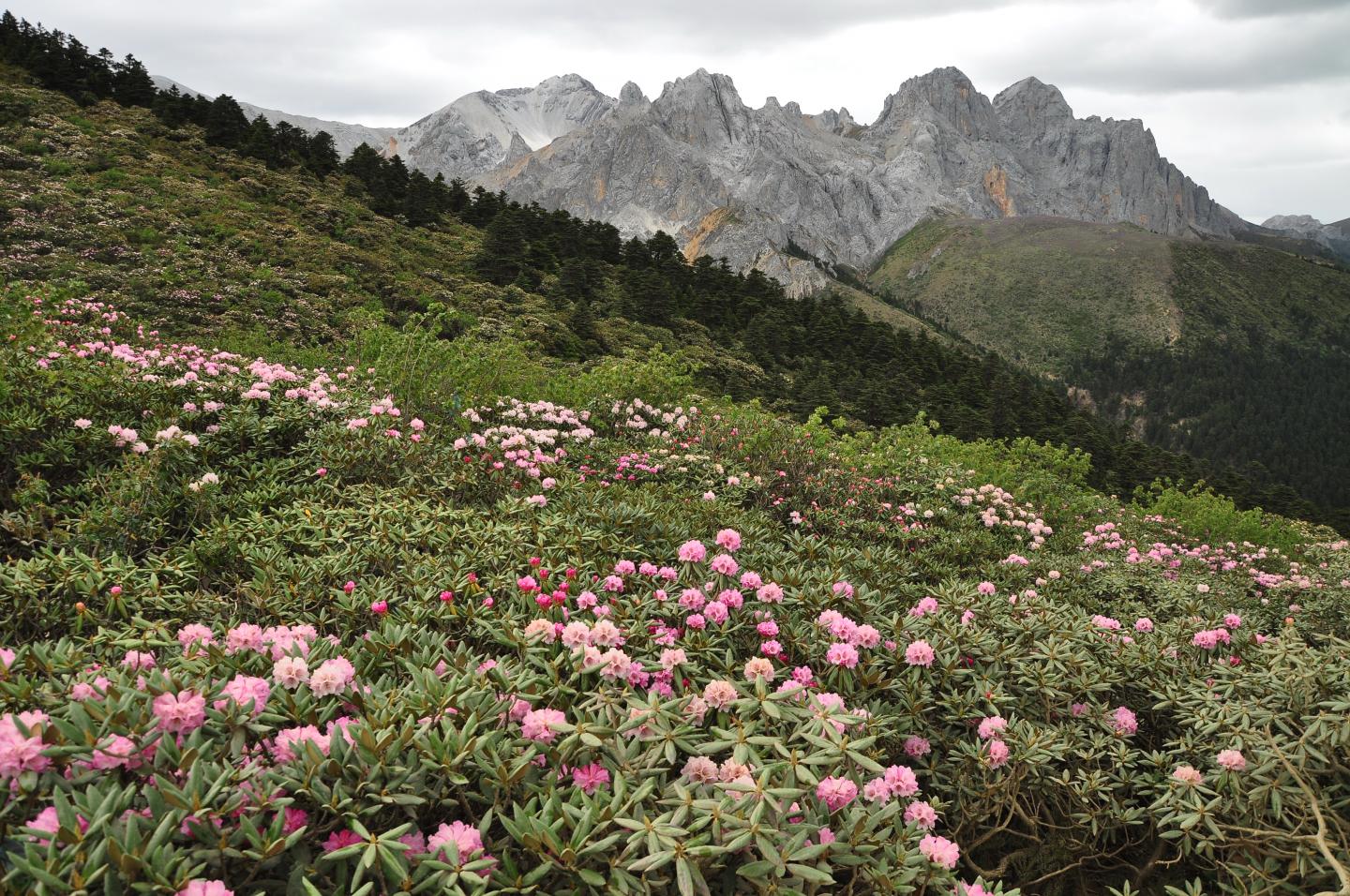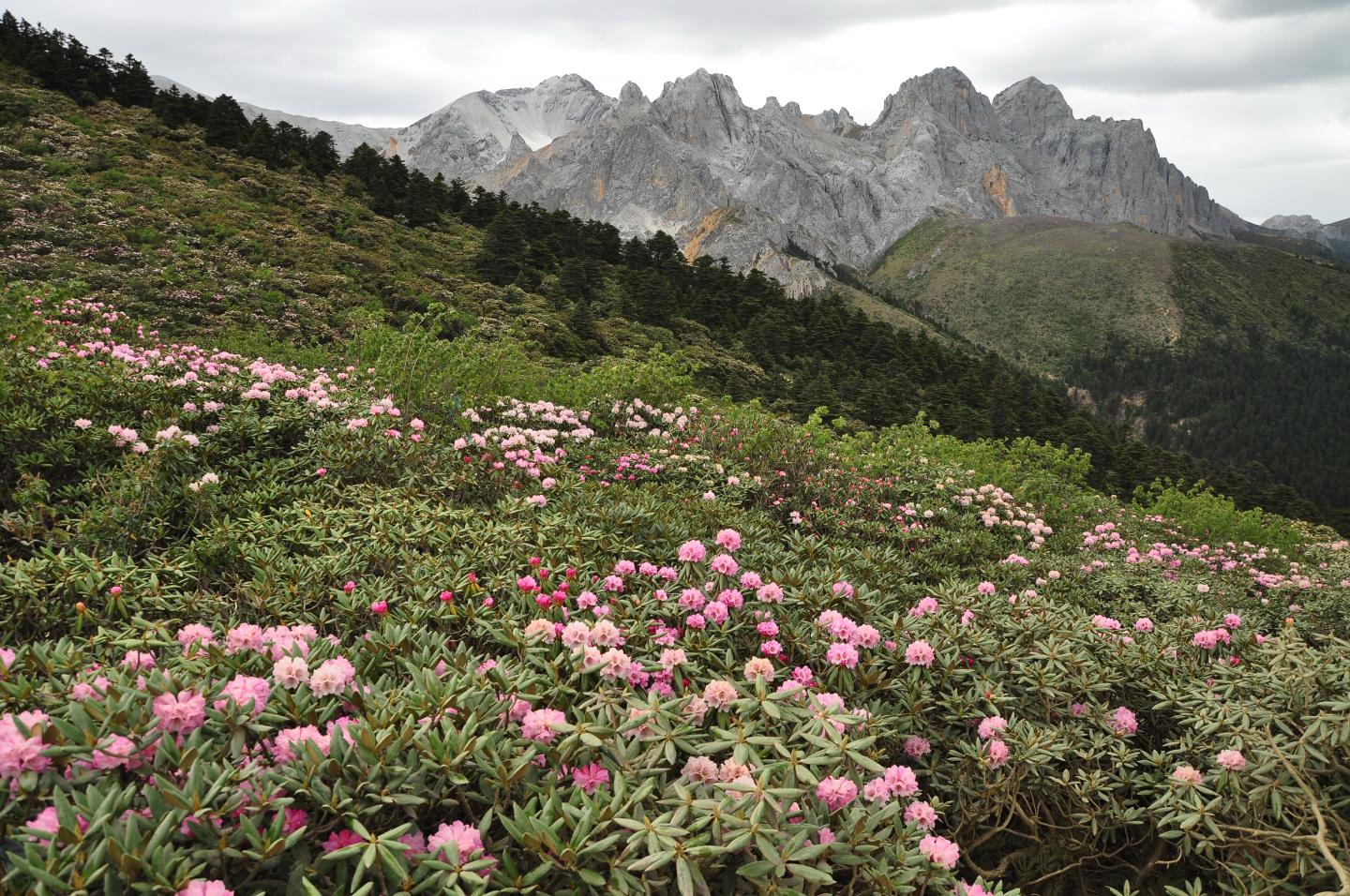
Credit: Photo by Jian Huang.
Mountains, like rainforests, are hotbeds of biodiversity. But scientists aren't sure why. For years, they've thought that it might be related to the new environments that arise when mountains form– as plants and animals adapt to the new micro-habitats and their populations become isolated by increasingly rugged terrain, they divide into new species at a faster rate than usual. However, there was little hard proof that this hypothesis was correct. In a new paper in PNAS, a team has put forth compelling quantitative evidence in favor of the hypothesis, analyzing thousands of plant species from China's Hengduan Mountains and adjacent regions. They found that as the Hengduan Mountains were forming, the plants there evolved into new species at a faster rate than in the nearby Himalayas, which are older.
"Essentially, this paper is about why there are so many species in mountains and how they came to be there," says corresponding author Rick Ree, Associate Curator of Botany at Chicago's Field Museum. "There are two main ways species can get to a place–either they emigrated from another place, or they evolved from an earlier species that was already there. Our research provides the strongest evidence yet that when mountains form, new species evolve and diversify at an increased rate."
The mountain range that Ree and his co-author Yaowu Xing studied, the Hengduan Mountains region in western China, is directly to the east of the Himalayas. It formed recently (in Earth-time, at least), eight million years ago, the result of colliding tectonic plates. Among global biodiversity hotspots, it's unusual in not having a tropical or Mediterranean climate. "The Hengduan Mountains are temperate, with cold winters and short wet summers. They have conifer forests, glaciers, alpine meadows–you could be tricked into thinking you were in the Rockies or the Alps, until you looked around and saw that there was ten times the biodiversity you see in those places," says Ree.
That incredible biodiversity, Ree and Xing suspected, was the result of uplift-driven diversification. According to this hypothesis, when mountains are formed by tectonic forces, the new distinct environments forming along the mountainsides allow the species already there to split and branch into new species that are specially adapted to those new environments. "As mountains form, you get different elevations, different substrates exposed, different soil chemistries, different climates. They create lots of little micro-habitats along which species can adapt to local conditions," explains Ree. "These changes mean more opportunities for species to diversity and fill new niches."
To test this hypothesis, the scientists examined the plants growing in the Hengduan Mountains, which are relatively young in geological time, and compared them to plants that live nearby on the Qinghai-Tibetan Plateau and Himalayas, which are much older. "We were able to use the differences in age as a natural experiment, with controlled comparisons of how species accumulated in the different regions, says Ree. "The fact that these mountains are next to each other but have different ages allows us to compare their histories in terms of how the species got there."
Ree and Xing performed phylogenetic analyses of thousands of plants, using DNA sequences to put together family trees showing how the species are related to one another. Then they used fossil plants to give their findings a time scale. "By looking at fossils, we were able to tell when different groups appeared and when ancestral species branched apart," says Ree. "The combination of modern plant DNA and ancient plant fossils gave us a historical framework that allowed us to reconstruct where and when species moved and diversified."
The team found that new species were formed at an increased rate within the Hengduan Mountains as they were forming, compared to species formation rates in the surrounding regions–evidence that species form faster as mountains are uplifted. But those revelations only became clear when Ree and Xing looked at the data set as a whole. "On their own, many of the plant groups don't show a strong pattern of increased diversity as the mountains uplifted, but when you look at them collectively, the pattern emerges quite clearly," says Ree.
This discovery is especially important in that it provides support for a hypothesis that largely lacked quantitative evidence until now. "The uplift-driven diversification hypothesis is popular, but this study provides the strongest empirical evidence so far," says Ree. "What sets this study apart is the way that we included lots of different plant groups, performed controlled natural comparions of these regions at different ages, and measured the rates of these processes over time. It's the first study that brings evidence from lots of different groups to bear on this question in a quantitative framework."
While Ree's main interest remains the Hengduan Mountains, he notes that the comparative approach employed in this study could be applied to other biodiversity hotspots and other organisms, including animals. "Ever since Darwin, we've wanted to know the what, where, and how of species' origins," says Ree. "How do species come to live where they do? Why are there more species here than there? Our study sheds a little light on those questions."
###
This study was completed by scientists affiliated with The Field Museum, the Chinese Academy of Sciences, and South Korea's National Institute of Ecology.
Media Contact
Kate Golembiewski
[email protected]
312-665-7103
@FieldMuseum
http://www.fieldmuseum.org
############
Story Source: Materials provided by Scienmag





